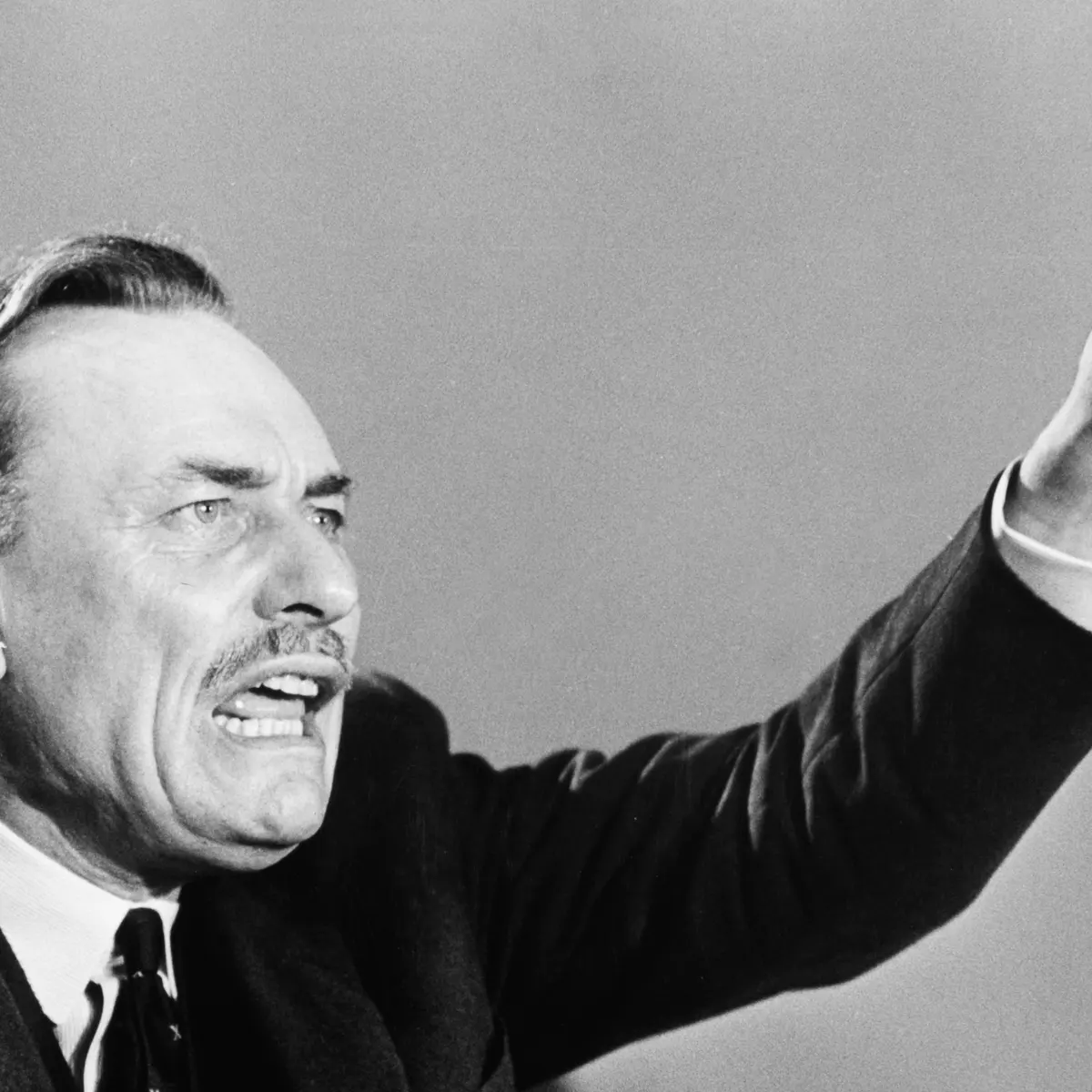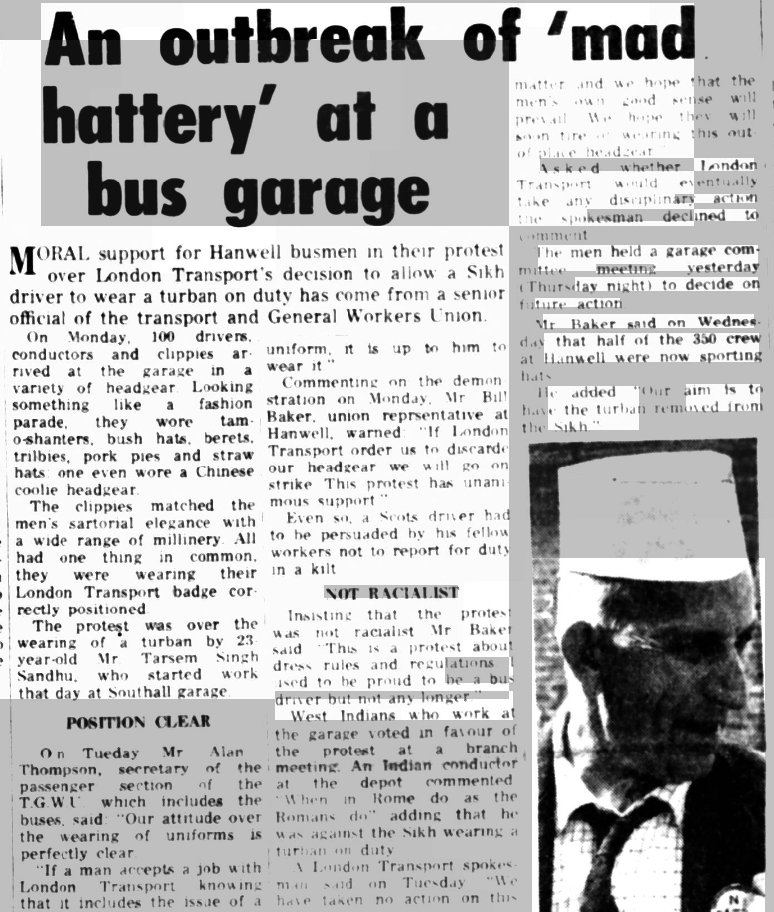1/19 So what's the story behind this man & why did he take such an oath?
The 1960s were full of instances of Sikhs fighting for their right to wear their turban all over the UK. #ThursdayThread
The 1960s were full of instances of Sikhs fighting for their right to wear their turban all over the UK. #ThursdayThread
https://twitter.com/RamblingSingh/status/1481615022782615554
2/19
⭐️Sant Singh Shattar (Royal Mail) Birmingham, 1960
⭐️Amar Singh (TFL) London, 1964
⭐️Mukthiar Singh Pardesi (Manchester Bus) 1967
⭐️Tasem Singh Sandhu (Wolverhampton Bus), Wolverhampton, 1967-69



⭐️Sant Singh Shattar (Royal Mail) Birmingham, 1960
⭐️Amar Singh (TFL) London, 1964
⭐️Mukthiar Singh Pardesi (Manchester Bus) 1967
⭐️Tasem Singh Sandhu (Wolverhampton Bus), Wolverhampton, 1967-69




3/19 In a similar vein to Amar Singh (who worked for TFL, on the left), Tarsem Singh Sandhu (right), after suffering an illness, returned to work in 1967, wearing his turban and beard.
4/19 However, he was suspended, as the rules were such that all bus conductors had to be clean shaven and wear a cap. He was one of six Sikhs who were testing the ban on turbans and beards. 

5/19 Tarsem subsequently fought for two years for the right to wear his turban at work. This included helping to mobilise the local community, resulting in a march of somewhere between 1,000 and 5,000 local Sikhs against the ban. [BHAM POST - Jan 29 1968] 

6/19 When nothing happened, Mr Jolly heaped pressure by making the ultimate threat - "He said he would burn himself to death because it's not worth living in this country where the discrimination is that much."
Mr Jolly set a deadline of 30 April 1969 for the ban to be lifted.
Mr Jolly set a deadline of 30 April 1969 for the ban to be lifted.

7/19 In order to find work Tarsem hadto move from Wolverhampton, in order to support his family. [BHAM POST - Tuesday 18 June 1968]
It wasn’t just public transport service regulations that were being contested.
It wasn’t just public transport service regulations that were being contested.

8/19 In the same year, two hundred Sikh workers at the Goodyear Tyre & Rubber plant in Wolverhampton were told that the company does not want to employ “men with long hair and turbans” in the interests of safety. 

9/19 In fact, Mr. I. Thomson, the managing director of Goodyear, went as far to say “the company did not object to turbans and as long as they were one piece and not of the wound-up type.” [BHAM POST - Friday 12 May 1967]
My guy had a penchant for starchy paghs.
My guy had a penchant for starchy paghs.
10/19 Some politicians, such as Mr. David Ennals, Parliamentary Under-Secretary at the Home Office, stated, “it is unfair and discriminating to require a Sikh to shave his beard.” 

11/19 A year later, Enoch Powell, on 20 April 1968, moments before likening himself to the Roman witnessing "the River Tiber foaming with much blood", 

12/19 the MP for Wolverhampton South described the turban dispute as "a cloud no bigger than a man's hand that can so rapidly overcast the sky". [BHAM NOV 20 - 1967]
13/19 Powell was sacked after the now infamous Rivers of Blood speech, but his words had already had their impact. “Feelings on immigration problems are so high that dangerous tensions could rapidly develop.”
14/19 The government was even requested to intervene and enforce the Race Relations Act. [BHAM POST - Monday 29 April 1968]
Ultimately, the decision was down to the Wolverhampton Transport Committee. [BHAM NOV 20 - 1967]
Ultimately, the decision was down to the Wolverhampton Transport Committee. [BHAM NOV 20 - 1967]
15/19 Two months later, bus conductors at the Hanwell bus garage of London transport decided to take a stance against Tarsem Singh Sandhu sporting his turban at work - which for them was sheer madness.
Middlesex County Times - Friday 05 July 1968
Middlesex County Times - Friday 05 July 1968

16/19 One took to wearing a mock turban, whilst others wore different kinds of hats, all in a bid to express protest at the fact that Sikh, Tarsen Singh Sandhu was requesting the right to wear his turban while driving a bus.
Daily Mirror - Wednesday 03 July 1968
Daily Mirror - Wednesday 03 July 1968

17/19 Although it was originally reported that over 200 bus conductors across London took part in the “Crazy Hats Protest” 

18/19 a couple of weeks later, the Union Representative, Bill Baker, admitted he only had the support of a dozen men out of the original 200 who sported 'irregular headgear'. In fact, he himself admitted, he was battered.
19/19 Finally, on 9 April 1969, Wolverhampton Transport Committee caved into pressure and they lifted their ban on turbans and beards.
Two days later, on 11th April 1969, the Daily Mirror published this cartoon.
Two days later, on 11th April 1969, the Daily Mirror published this cartoon.

• • •
Missing some Tweet in this thread? You can try to
force a refresh










